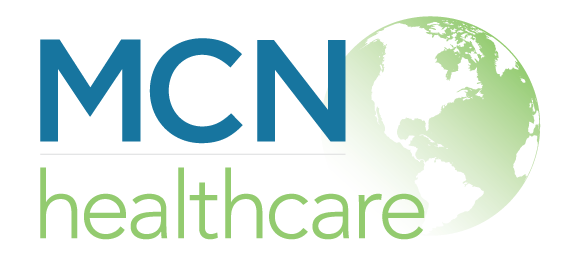
Policy Management Software As a Part of Risk Management in Healthcare
Effective risk management systems serve as the backbone of healthcare organizations, as managing risks is an ongoing responsibility for all healthcare systems. Risk management systems help to increase patient safety and satisfaction. These systems also benefit the organization by protecting assets, market share, accreditation, reimbursement levels, and brand value. This blog post will discuss the benefits of using a risk management system and how to choose the best system for your organization.
Benefits of Using a Risk Management System in Healthcare
Risk management allows healthcare organizations to identify and address potential risks and liabilities. An effective system provides guidelines to get to the forefront of potential risks. Getting ahead of risks is better than responding to an incident for all involved parties. A good plan will identify potential liabilities through risk mitigation, frequent audits, and compliance reviews.
There is no perfect healthcare system, so some adverse events will happen. A risk management system will cushion any possible impact when an adverse event does occur. Acting swiftly and efficiently demonstrates responsibility and influences trust amongst all stakeholders.
A risk management plan will improve compliance, reduce costs, enhance reputations, and increase efficiency. The goals of a risk management system include the following:
- Catching near misses
- Reducing medical errors
- Ensuring risk awareness
- Providing actionable data for different interdisciplinary teams
- Mitigating fallout
- Protecting confidential patient information
- Planning for the future
How Can a Risk Management System Help to Improve Patient Safety?
A risk management system helps identify potential risks and hazards that can threaten patient safety. The system will include helpful tools such as incident reporting, root cause analysis, and risk assessments that help healthcare providers to identify and document adverse events, near misses, and other safety concerns. These tools will decrease patient harm by proactively working to identify and eliminate risks.
A risk management system makes it possible to monitor patient safety data and performance metrics, which allows healthcare providers to measure and track patient safety outcomes. This system supports identifying patterns and trends and builds a path for improving patient safety.
An effective system will also help to impact healthcare-provider collaboration. It allows for timely reporting and sharing of safety-related information. Furthermore, it enables effective communication between the interdisciplinary team, facilitates active learning from events, and encourages a culture of transparency and accountability in patient safety.
What Should Healthcare Organizations Consider When Selecting a Risk Management System?
Healthcare organizations should consider their internal needs when selecting a risk management system. An effective healthcare risk management system is constantly evolving, detecting, monitoring, and protecting. The system should also work in harmony with the facility’s ethics and values.
Due to the complex and sensitive data handled by healthcare organizations, the system should offer extensive security and data privacy. There should be systems for regular security audits to detect any deficiencies within the system.
Healthcare facilities have to stay up to date with regulatory and compliance requirements. The risk management system should offer features such as data encryption, audit trails, and access controls.
A risk management system should be customizable to the individual organization’s needs. Healthcare organizations have different needs based on size, patient population, and unique risks. The system should also be set up to grow with the organization as its needs change.
Healthcare facilities encompass all types of people with varying technology experiences. The system would be ineffective if it were too difficult to use or understand. The design should be user-friendly, with minimal training required for basic use. The vendor should also provide adequate training and support resources, such as training manuals and customer support.
How Can a Risk Management System Help to Reduce Medical Errors and Other Risks in a Healthcare Setting?
A risk management system can play a crucial role in reducing medical errors. The system will help to identify and assess potential risks. By identifying risks, healthcare professionals can take the appropriate actions to eliminate them before they result in patient harm. Failing to review, approve, and sustain proper policy management leads to risk.
A risk management system will provide a structured incident reporting and investigation process. Uniform and timely reporting will allow for a thorough investigation to identify the incident’s root cause. Healthcare organizations can then use this information to develop corrective actions and preventive measures to avoid similar events in the future.
In addition, a risk management system can collect data related to past events and near misses. This data can guide decision-making and enable risk-mitigation actions, and the information can help with developing and implementing evidence-based protocols and best practices to reduce the occurrence of medical errors and other risks. It can also involve staff education and training to enhance their risk identification, assessment, and management skills and knowledge.
Implementing risk management in the healthcare setting is critical to ensuring the safety and well-being of patients, staff, and the facility. It is well within reach for hospitals to develop a comprehensive risk management approach that is effective and sustainable. A risk management system can be valuable in reducing medical errors and other risks by identifying risks, facilitating incident reporting and investigation, analyzing data, ensuring compliance, and promoting continuous improvement.
A healthcare organization’s policies and procedures are an integral part of reducing risk. Policies and procedures must be the same across the continuum of care. Policies and procedures must be reviewed and updated with changes in regulations/standards/evidence-based practices. The healthcare organization should provide resources for staff to keep up to date regarding regulatory changes as well as resources for staff education. It doesn’t matter if an organization has policies and procedures if they are not implemented and staff do not receive education about those documents.
MCN Healthcare solutions provide policy management, policy library, email notification system, and learning management system with content. MCN Healthcare also provides exceptional customer service, healthcare blogs, ebooks and webinars to help organizations stay current, ultimately creating a safer healthcare environment and improving patient outcomes.
References
Bock, E. (2017, April 21). Reducing Medical Errors Requires Leadership, Culture of Learning. NIH Record, LXIX(8). https://nihrecord.nih.gov/2017/04/21/reducing-medical-errors-requires-leadership-culture-learning
CMS Technical Reference Architecture. (n.d.). Cyber Security Operations / Risk Management. https://www.cms.gov/tra/Content/Network_Services/NS_0090_CICC_Operations.htm
Manuel, B.M., McCarthy, J.L., Berry, W., Dwyer, K. (2010, December 1). Risk Management and Patient Safety. Patient Safety Network. https://psnet.ahrq.gov/perspective/risk-management-and-patient-safety


